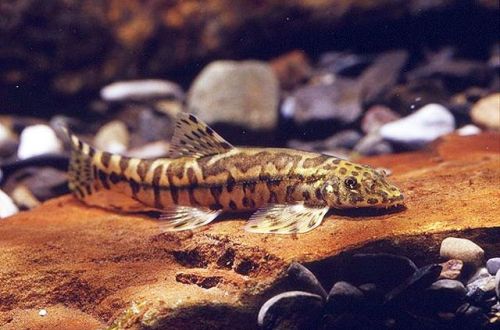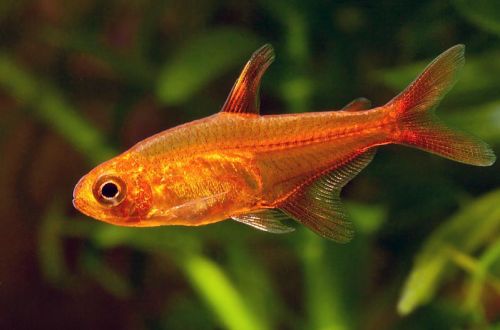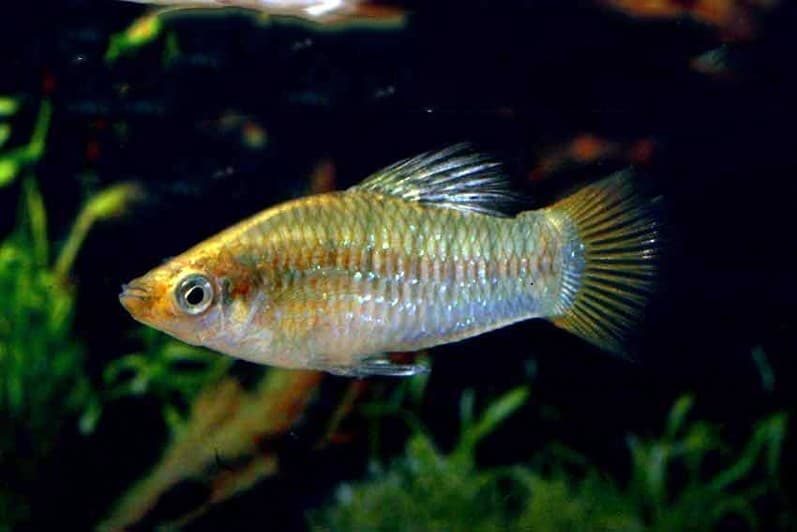
Limia Dominican
Dominican Limia, scientific name Limia perugiae, belongs to the family Poeciliidae (Peciliaceae). As the name implies, the fish comes from Central America. Considered endemic to a small number of river systems in the southern Dominican Republic. It occurs in shallow water among dense thickets of plants. It lives in both fresh and brackish environments.

Contents
Description
Adults reach a length of 4–5 cm, although specimens 10 cm long have been found in the wild. The shape and color of the body depends on the salinity of the water. The higher the salt concentration, the smaller and more colorful the fish. In salt water, the body becomes more streamlined and the head rounder.
In males, the color is gray-brown, the scales cast with blue hues. The dorsal and caudal fins are pale yellow or orange with black edging. Some males may have noticeable stripes.
Females are yellow-gray-brown with a silvery belly. Fins are translucent. There is a black dot at the base of the dorsal fin.
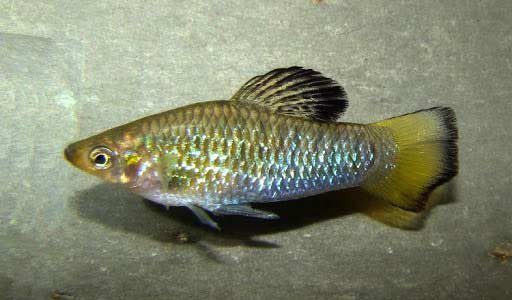
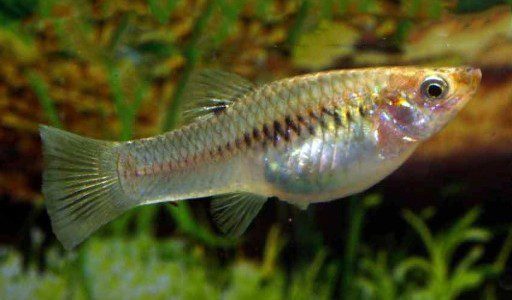
Behavior and Compatibility
Peaceful moving fish. Often found in large flocks in the wild. Compatible with many other non-aggressive species of comparable size.
Brief information:
- The volume of the aquarium – from 40 liters.
- Temperature – 24-28°C
- Value pH — 6.8–8.0
- Water hardness – medium or high hardness (from 10 or more 20 dGH)
- Substrate type – any
- Lighting – moderate or bright
- Brackish water – recommended, 7-10 grams per 5 liters of water
- Water movement – light or moderate
- The size of the fish is about 5 cm.
- Food – any food
- Temperament – peaceful
- Content alone, in pairs or in a group
Maintenance and care, arrangement of the aquarium
The optimal size of the aquarium for a group of 4-5 fish starts from 40 liters. The design is arbitrary, the presence of thickets of plants, including floating ones, is welcome.
Dominican Limia prefers warm, hard water with high pH values. Permissible content in a brackish environment.
Aquarium maintenance is simple and consists of regularly replacing part of the water with fresh water, which is usually combined with the removal of accumulated organic waste.
Food
They are omnivorous, accepting dry, frozen and live food of suitable size with equal enthusiasm.
Breeding / breeding
Fish give birth to fully formed fry, bypassing the stage of eggs. The incubation period lasts 4-6 weeks. The older the fish, the more fry the female can give. The number of juveniles can be from 10 to 100.



